No time to read the entire article now? Or do you want to use it while being on the road (often without phone reception)?
Download our FREE STUART HIGHWAY GUIDE now!
The Stuart Highway, or the ‘Explorer Highway’ as this iconic road is sometimes called, takes you from Adelaide or Port Augusta, South Australia, all the way up north to Darwin, the top end of the Northern Territory. Without any detours, you’ll have to drive at least 2700 kilometres to get there. And in our opinion, it’s a trip everybody should make! This is Australia!
In this article, we’ll give you a complete guide you can use to prepare your trip or while you’re driving the Stuart Highway. We’ll mention the places where you should stop to explore, sleep and eat. This guide will be useful to you whether you do only a part of this road trip, such as Adelaide to Alice Spring, or the whole length.
Read more about our own adventure in our travel diary: The Stuart Highway and Uluru
Why you should drive down the Stuart Highway
Some history
In 1862, John McDouall Stuart was the first European to travel from the Southern shores, through the red centre, up to the tropical Top End. In the beginning, there were only red dirt tracks that could be used, a lot of which still exist today and can be explored with a 4WD, such as the Oodnadatta Track. They also used this route to establish the Telegraph line (providing a connection between the outback and the outside world) and the legendary Old Ghan Train route. These days, the Flying doctors even use some parts as a runway if they have to land nearby for an emergency.
An epic adventure
From the moment we planned to go to Australia with our kids, I knew the Stuart Highway had to be on our list. This epic road trip from Darwin to Adelaide through the outback is one of the most remarkable roads in Australia. The history, remoteness and length speak to the imagination. The real Stuart Highway, the A87, actually stops in Port August. But a lot of people start or end in Adelaide which is another 300 km to the south.
The Stuart Highway will bring you road trains (trucks with 3 to 5 trailers), remoteness, stunning scenery, a sense of the indigenous culture and mining history and most of all the feeling of being an adventurer. You’ll pass names as Devils Marbles or Snake River, see strange things along the way and wildlife if you’re lucky. But one thing is sure, it will leave an everlasting impression.
We travelled in the opposite direction of John Stuart, as we arrived in Darwin coming from Singapore. In this guide, we’ll follow the direction of Stuart as most people drive it this way. Whether you do a small stretch or the whole length, as we did, you’ll love it! If you have enough time, go slow and try to really explore the region, national parks and some of the iconic stops along the route. A lot of people do the Adelaide/Port Augusta – Alice Springs/Uluru part, but we can really advise you to continue after that and go all the way up to Darwin!
Prepare your trip – Things you should know before you go
Don’t be mistaken, this road trip won’t take you from one hot tourist spot to the other. You’ll be alone for hundreds of kilometres driving through one of the hottest and most remote places on earth. Nothing to be scared off, but you do want to prepare yourself and don’t take the potential dangers lightly.
Our biggest fear, especially since we were taking our two kids along, was having car trouble along the way. And this actually happened! Luckily for us, it all turned out ok and we were in the outback town Katherine and not somewhere along the road out in the desert.
Read more in our travel story: Darwin, Katherine and car trouble.
The best time to plan your trip on the Stuart Highway is from May to September (Australian winter). During these months it’s dry and the temperatures are mild and enjoyable. You can take as long as you want to drive up or down the Stuart Highway, but we advise you to take at least 2 weeks, especially if you also want to explore Uluru.
Prepare your car or van
Have your car checked by a mechanic before you leave! Although that’s no guaranty you won’t have car trouble, as we just left the mechanic in Darwin and still got a car breakdown. Don’t panic, however! Although the Stuart Highway isn’t a very busy highway, there will pass a car or truck at least every hour or two hours. And out here, people help each other!
Make sure you have good car insurance with road assistance. You don’t want to pay a local garage if they have to tow you for hundreds of kilometres. You don’t need a 4WD for the Stuart Highway but if you want to do parts of the Oodnadatta Track or other outback roads.
If possible, try to attach an awning to the side of your car. This will create extra shade in the unfortunate event of having a car breakdown in the middle of nowhere where there is no natural shade.
Be sure to have some basic knowledge about car mechanics such as changing a tire, checking fuel and water, controlling tire pressure, … Buy the right tools before you leave in case of problems.
Stock up
Have plenty of water and food with you. Count several litres of water a day for everybody person travelling with you. Take extra water, oil and gasoline (if you have spare cans) for your car. You never can have too much water, food or fuel out here, so stock up as much as possible! Be aware if there are strong winds, you’ll use up much more fuel. In the most remote areas, everything is really expensive, including gas. Start with a full tank and if possible fill your spare gas cans with cheap fuel. When you leave in Darwin or Adelaide, stock up your food and drinks. It will be much cheaper here!
On the other hand, if you stop at one of the roadhouses, do understand how important they are for the area and how difficult it is for them to get supplies (which explains the higher cost). So buy yourself a coffee if you are getting tired, use their facilities and even enjoy a good meal such as aa outback burger.
The road is long! If you travel with kids, make sure they have plenty of books, toys, road games and movies on tablets with them. I know, they should be looking outside and enjoy the surroundings. But trust me, after a few hours (or let’s say 30 minutes) they’ll want something else to distract them! Oh, and what’s a good road trip without any music? Take your favourite playlist with you!
Things to know while you’re travelling on the Stuart Highway
Look out for wildlife
Don’t drive when it’s dark! Kangaroos, emus, dingos and smaller animals all come out during nighttime. You don’t want to hit one of them, both for the animal, your own car and safety. We’re not kidding, from the moment the sun is setting you should be pulling up your stay for the night. Make sure you plan correctly so you don’t end up driving during the night.
We expected to see a lot of kangaroos while driving. We didn’t see any (and did look for them for hours) … Or actually we did, all dead ones along the side of the road. Killed during darkness by road trains. So they are there but just don’t come out during the heat of the day. Which is probably a good thing since we didn’t want to crash into one of them.
You will see lots of wildlife, however, if you visit one of the national parks you pass or if you camp along the Highway. They come out when the sun is setting. We did see emus, cattle, horses and eagles during the day and if you are lucky you might spot a camel. Drive slow if you see them. Eagles take off slowly!
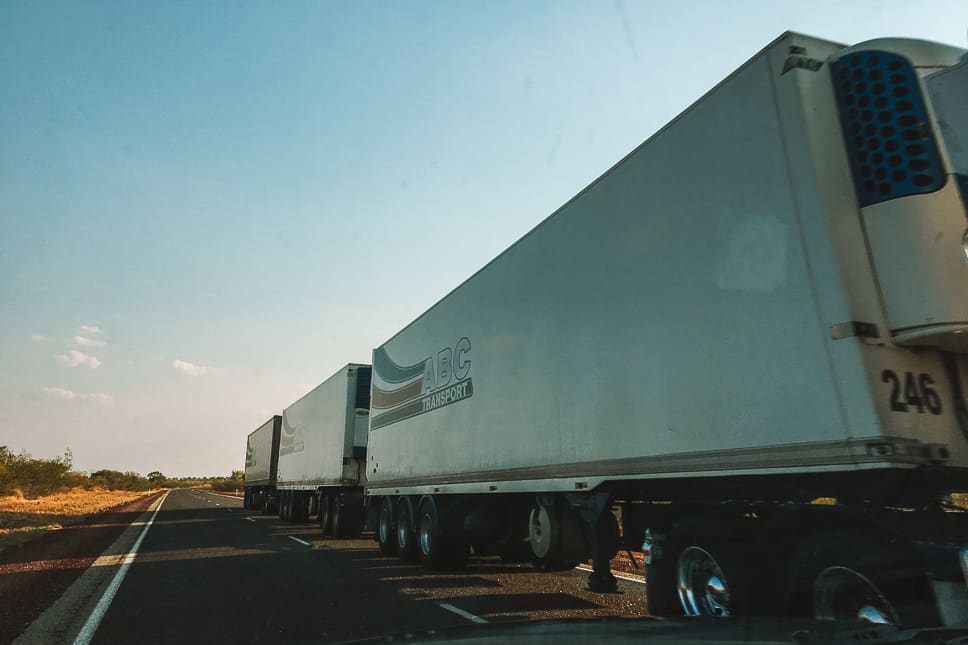
Along the road…
Have you ever seen road trains? These massive trucks pull 3 or more trailers. They don’t move aside for you! Which means if you come across one of these, give them some room! Take your time if you want to overtake them.
You’ll have to drive for hours! The road is long and although the scenery is stunning, it can be the same view for hundreds of kilometres. Make sure to stop regularly to avoid fatigue. Take a break, stretch your legs, switch drivers if possible or eat something.
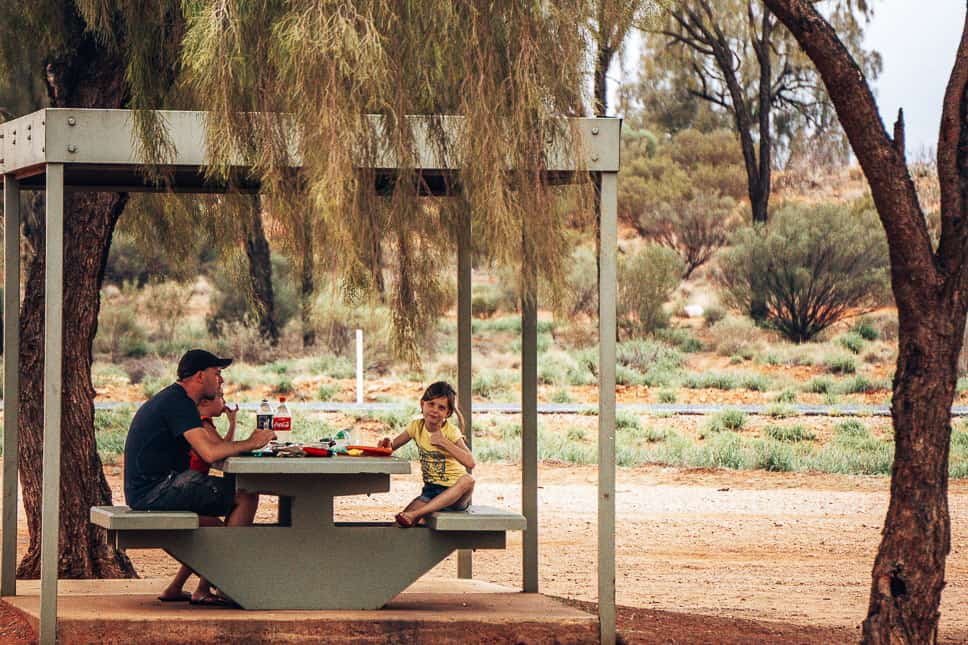
A dot on the map may seem like a town or small village, but often it’s only one roadhouse. And the next dot on the map is another hundred kilometres away. The amazing thing, however, is those roadhouses can help you with a lot, almost everything actually. You can have a drink, eat something, stay overnight or camp, have mechanical aid, phone reception, a little shop, …
Plan ahead where you want to sleep, rest or eat as the distances in between those stops can be huge. Wikicamps is an amazing app that will give you the best places to camp (sometimes free) or rest during the day.
You drive to remote areas without any cell reception. Only around towns and a few kilometres before or after a roadhouse, you’ll have some reception. Telstra will bring you the best coverage, sometimes Optus Mobile as well.
The Oodnadatta Track
If you really want to go down the road of the pioneers, you should drive the Oodnadatta Track as a detour from the Stuart Highway. Used for centuries by the indigenous people, this is the original road John Stuart took and the route of the Old Ghan Railway. Although a 4WD is recommended, it’s one of the easiest outback tracks to drive, with solid gravel roads and a lot of things to see.
Unfortunately, we skipped this track and drove the paved Stuart Highway. After our previous car trouble, we were afraid to go off track, especially with the kids. We will come back for this!
The track runs between Marree in South Australia and Marla on the Stuart Highway. Besides Marree and Marla, you can enter the Oodnadatta Track at some other points. Coming from Woomera, you could drive up to Roxby Downs and take the Borefield Track towards the Oodnadatta Track. Or you could take a turn in Cooper Pedy and drive towards William Creek.
Read more in this very interesting article we’ve found on the Oodnadatta Track.
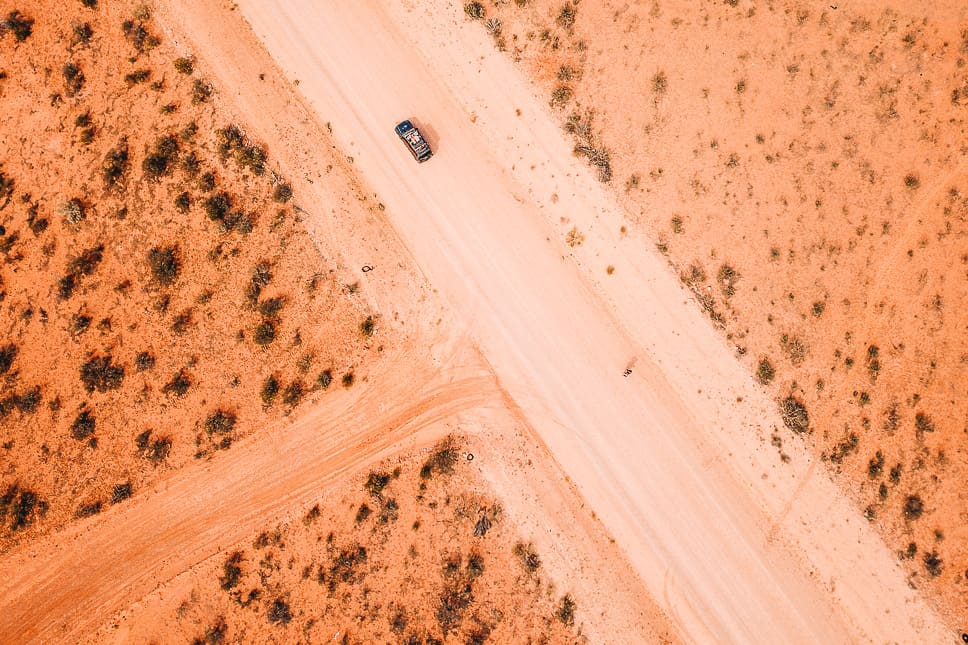
Adelaide – Port Augusta
The stretch between Adelaide and Port Augusta is about 300 kilometres long. You’re not really in the outback here yet. You’ll have Telstra phone coverage everywhere and plenty of options to get fuel.
Adelaide
A lot of people start their trip from the capital of South Australia. In this guide, we won’t dive deep into exploring Adelaide itself. But if you do start or end here, give yourself a couple of days to discover the sights, restaurants and atmosphere of Adelaide.
Be aware that the traffic in and around Adelaide can be really dense. It will probably take you more time than you anticipated to leave or get to Adelaide. As I said before, The Stuart Highway actually starts in Port August. From Adelaide to Port August you need to take the Princes Highway (A1), which is clearly signposted. Look out for emus in the surrounding fields.
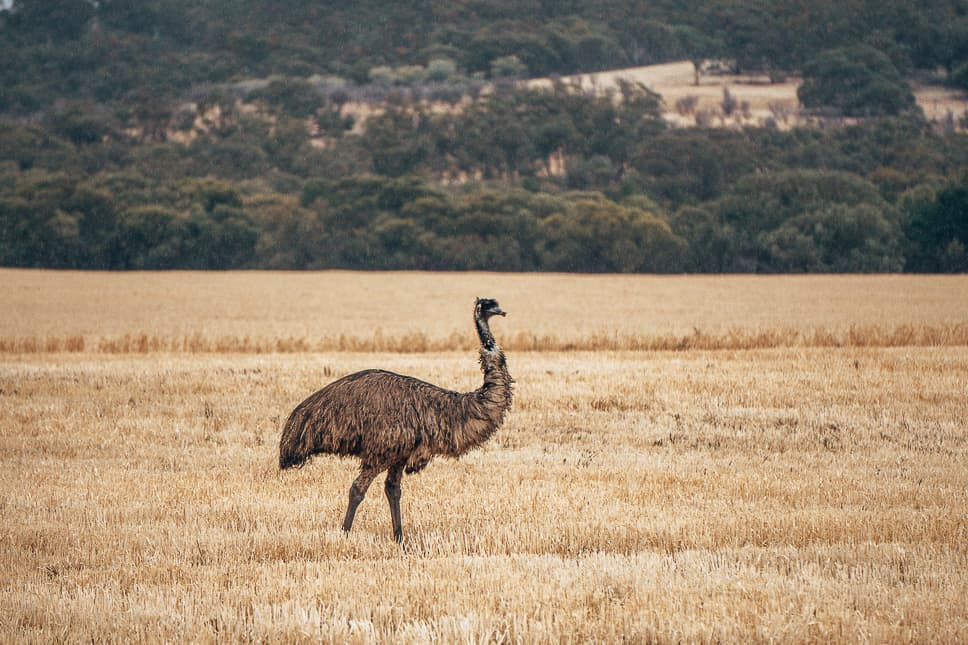
Barossa Valley – Clare Valley
The ride in between Adelaide and Port Augusta goes past a lot of small towns and villages such as Port Wakefield, Port Pirie, … In Lochiel, look out for the giant lake that looks pink. They say you can find the monster of Lochness here.
Also very interesting is a detour off the Princess Highway, passed the Barossa Valley and Clare Valley, some of the most famous wine regions of Australia. Your last chance to taste some really good wine and local products before you hit the outback.
Wirrabarra, another small town away from the Princes Highway, offers a special treat. To attract tourists, they made local artists paint the large silos of the farms. Which now results in the most amazing silo art you’ll have ever seen! If you want to come here, plan your visit as you need to make a detour off the A1.
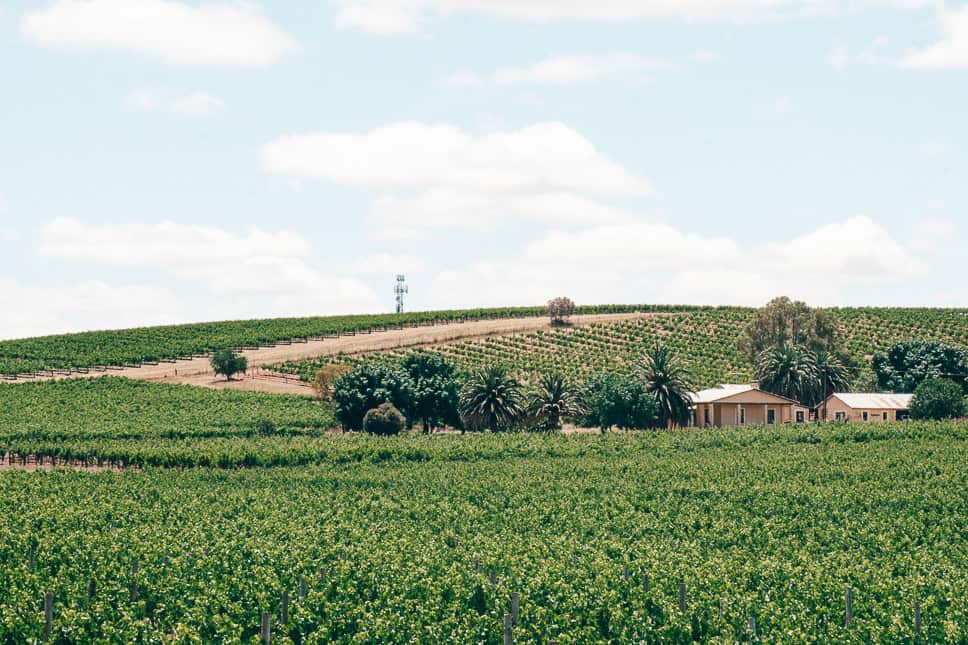
Port Augusta
This town is the last big town before you hit the outback and the actual start/endpoint of the Stuart Highway. You’ll definitely notice the huge power stations when you approach Port Augusta. Time for the last check on your car, fuel, water and food before you hit the road to Coober Pedy. We drove down from Alice Springs to Port Augusta, so for us, it was the first civilisation we encountered after days in the outback, which felt strange.
Although the town doesn’t really have major tourist attractions, it’s a great base for a day trip to the Flinders Ranges or you could talk a walk over the old bridge, passed the wharf and through the old streets (heritage walk). You can also pay the Australian Arid Lands Botanic Gardens a visit.
There are a lot of places to stay in Port Augusta booth hotels and campgrounds. But when we checked WikiCamps for a campground, there wasn’t one of them that really stood out to us. Instead, we took a half-an-hour detour and found an amazing campground in the small town of Wilmington, Beautiful Valley Caravan Park. Completely off the beaten track, but so much more character than some of the generic campgrounds in Port Augusta. The girls could even feed some possums together with the owner. We ended up staying there for a couple of days.
Read more in our travel diary about Wilmington and the Barossa Valley in South Australia.
The Flinders Ranges
Although this national park isn’t exactly next to the A87 or Stuart Highway, it’s definitely worth the detour. In Port Augusta, take the B83 for about 170 kilometres up to Ikara – Flinders Ranges National Park.
Every nature and bush lover will have the time of their life in this national park. This park has one of the oldest landscapes in the world. It’s easily accessible with lots of hiking and biking trails, good roads and a lot of historical sites. The stunning scenery with its hills, gorges and creeks and beautiful vegetation will blow your mind. Check out the Wilpena Pound, a giant natural amphitheatre.
Again, the best time to visit the park is between May and October when it’s not too hot for one of the hikes. This will also give you the best chance to spot some of the many kangaroos, wallabies and emus, although they can be spotted year-round. Take your time here to soak up the history of the places and the exceptional natural beauty.
Port Augusta – Coober Pedy
In between Port Augusta and Coober Pedy lay 540 long kilometres. As from now, you’re officially in the outback and driving on the Stuart Highway! You can do this trip in one day, as we did. But if you have more time, you can stay over in Pimba, Woomera or Glendambo. There even are a lot of free roadside campsites which you can find on WikiCamps.
You’ll still have Telstra reception between Port Augusta and Glendambo, but after that, everything goes dead right up until Coober Pedy. Look out for emus when you’re driving in between Port Augusta and Pimba.
Fuel and food are available at Port Augusta, Pimba, Woomera, Glendambo and Coober Pedy. The longest stretch without facilities or fuel is the 250 kilometres in between Glendambo and Coober Pedy.
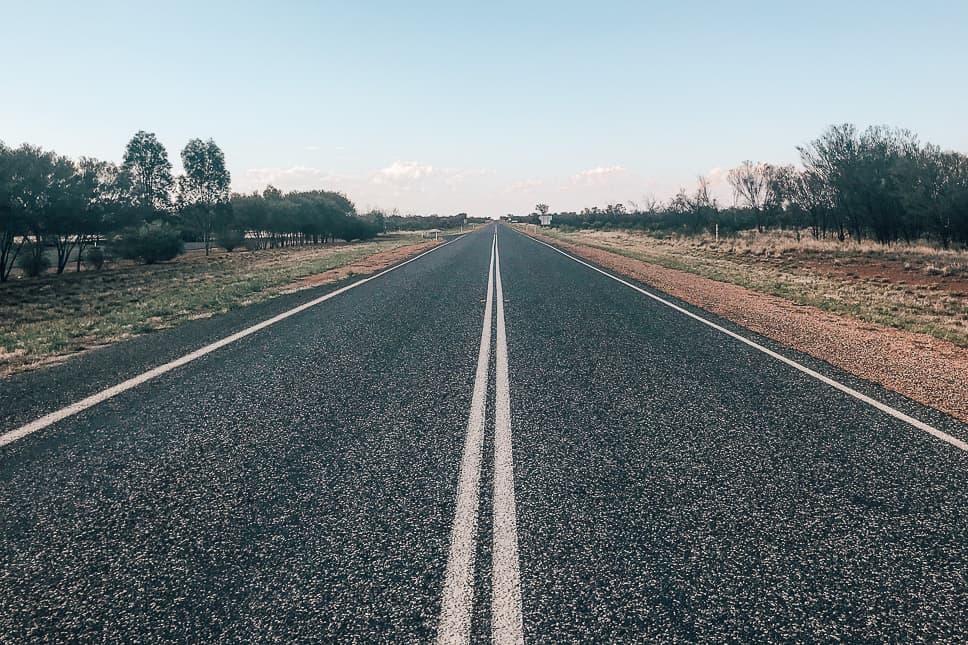
Pimba – Woomera
Pimba itself isn’t really worth the visit, but you can stay overnight at Spud’s Roadhouse. They have accommodation, fuel, meals, snacks and an ATM.
Much more interesting however is the town of Woomera, which is a couple of kilometres of the Stuart Highway. This little yet modern town with a lot of facilities is home to the Woomera Rocket Range. This British/Australian project was established in 1947 to test and launch satellites, rockets and weapons. They fired rockets into the Woomera Prohibited Area, the largest military testing area in the world. Unfortunately, lots of indigenous people were forced to leave these ‘inhabited’ lands to make this possible.
Because of the secret missions, Woomera used to be a ‘No Go’ town, but nowadays there is plenty to discover. Start your visit at the, very interesting, Woomera Heritage Centre. In town, you’ll find the lovely Breen Park, a supermarket, post office, places to eat and stay overnight.
Woomera is also the base for a visit to the neighbouring towns of Andamooka and Roxby Downs. Andamooka is an opal mining town with some of the world’s best opal, which showcases a lot of these beautiful gems. Roxby Downs is a young town with lots of facilities, which has Australia’s largest underground mine.
If you’d like to visit Woomera, Andamooka and Roxby Downs, stay overnight in one of the towns. For example, In Woomera, you can stay at Woomera Caravan Park and Eldo Hotel. There’s the Andamooka Dukes Botlehouse Motel and the Myall Grove Holiday Park at Roxby Downs.
Salt lakes
Look out for salt lakes when you’re driving between Pimba and Glendambo. They offer a stunning sight! At first, we didn’t realise what the vast white spots at the horizon where. This region has a lot of salt lakes, however, with Lake Hart being one of the biggest.
Take your time to discover this area, walk on the salt, enjoy the view with a picnic. You can even stay here overnight.
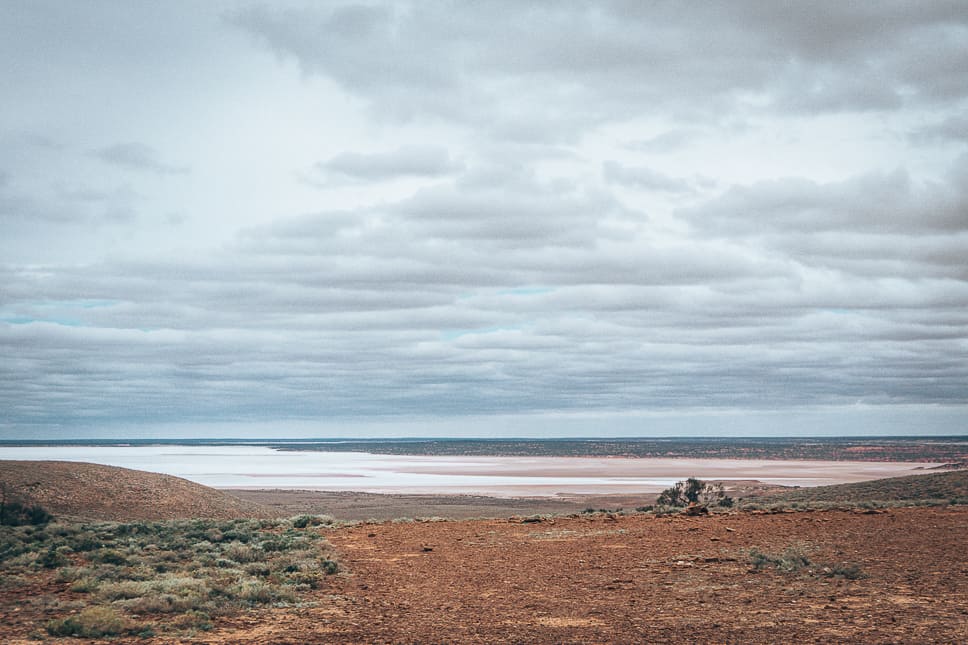
Glendambo
This small town right next to the Stuart Highway is most known for its iconic sign. It inhabits 22500 sheep, 2 million flies and only 30 humans (or so the sign says). We didn’t count them, but we’re sure about the flies though!
The Glendambo Roadhouse (which is right next to the Stuart Highway) offers fuel and meals. There is another smaller roadhouse in town. Accommodation can be found at the Glendambo Hotel Motel which has mixed reviews, however. You can camp in town and there are also a lot of free campsites nearby.
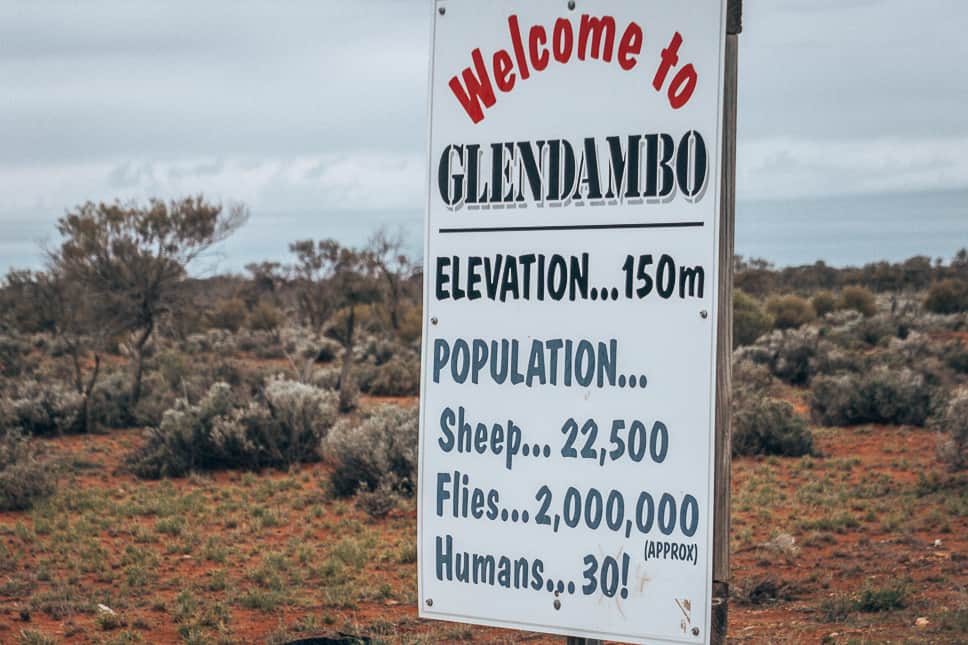
Coober Pedy
The 250 kilometres drive from Glendambo to Coober Pedy is the longest on this trip without any facilities besides a few rest areas. There won’t be any phone coverage until you reach Coober Pedy. As there isn’t much to see either, it’s time to enjoy that music you brought and give the kids some road games or let them watch a movie.
You’ll notice you reach Coober Pedy once you start to see piles of earth, coming from the many opal mines. They call Coober Pedy the ‘opal capital of the world‘. Situated 700 km from Alice Springs and 850 km from Adelaide, you are in the middle of the outback. The friendly town offers all the facilities you need and a lot of fun activities, mainly related to the opal mining industry and history.
It is one of the driest regions of Australia and the town symbolises the hard outback life. In the early days, opal miners have been struggling to find water. But not when we were there! When we approached Coober Pedy we could see dark grey clouds approaching. It rained from the moment we arrived until we left. Which meant it was hard to explore this town as thorough as we would have wanted. But still, we got to see a few spots.
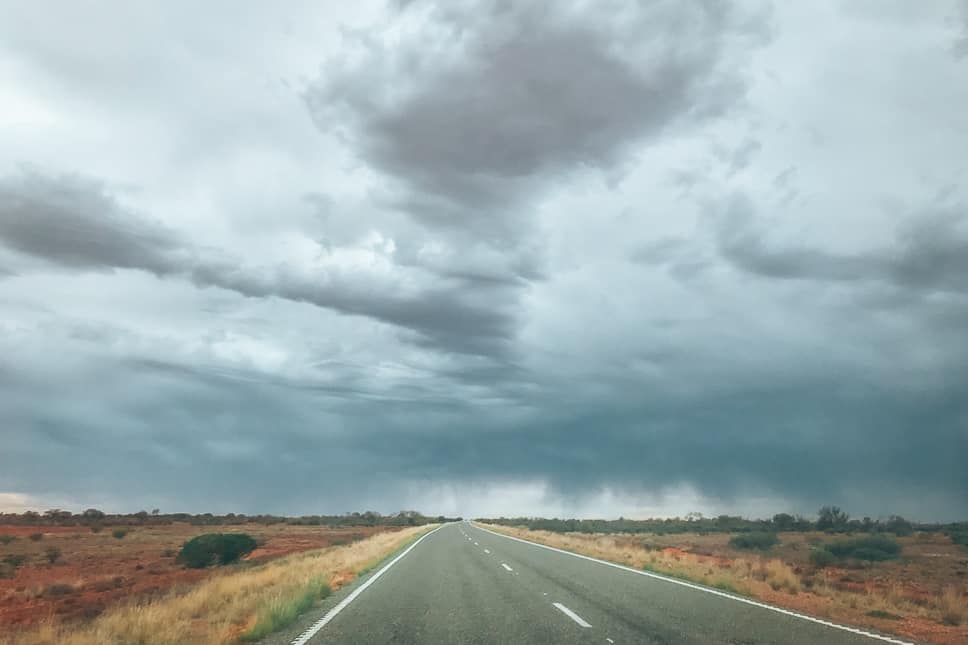
Go underground
In Coober Pedy, you can find churches, restaurants, accommodation, museums, … underground. The locals dug and carved them out of the mountains, in an attempt to escape the harsh conditions outside, such as the extreme heat. Underground, it stays cool and bearable.
We visited a church and the Umoona Opal Mine and Museum. They have amazing guided tours through a real opal mine and an interesting underground museum. Of course, you can also buy opal down here.
If you want to go for the real experience, book one of the underground accommodations. There is even an underground campground (check WikiCamps), but unfortunately, our 4WD with rooftop tent was too high. It would have been a nice alternative as it rained the whole night! Check the Comfort Inn or Radeka’s (backpackers) for an underground bed.
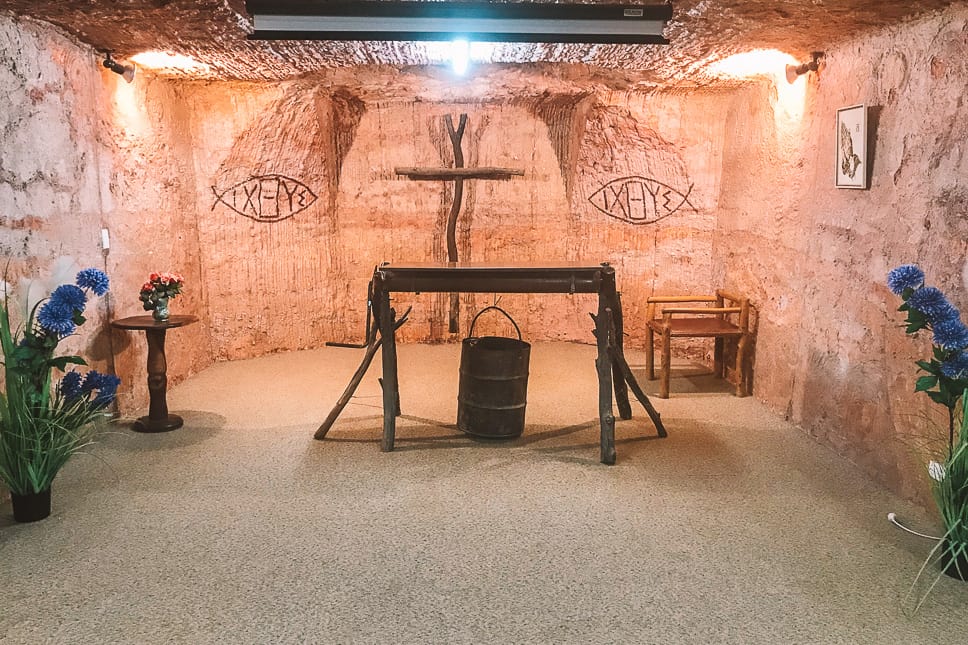
Other sights
As it was raining a lot during our stay, we didn’t really explore more. Another good reason to come back. But here are some more fun things to do around.
You could go to the Breakaways, for a sunset trip (only 33 km north of Coober Pedy) or the Moon plain where movies as Mad Max and Star Wars were recorded.
Nearby Coober Pedy (50 km north on the road to Cadney), you can visit another bizarre attraction, a fence. But not just any fence, the longest fence of the world. The Dingo Fence covers more than 5000 kilometres and is built to keep the Australian dingo away from the sheep living in the Southern parts of Australia.
Beside the Umoona Opal Mine and Museum, a lot of other tours in opal mines are offered. Don’t let the kids run around freely next to the road. You see signs everywhere to warn you for deep shafts and unmarked holes.
Another fun trip is to travel together with the mailman, who delivers mail to Oodnadatta, William Creek and some cattle stations. The tours start at Coober Pedy.
Coober Pedy – Alice Springs
The almost 690 km between Cooper Pedy can be done in one day, but if you have time, break the journey up in two days, especially if you also want to do a detour to Uluru. Cadney, Marla and Erldunda have decent rooms or campgrounds.
You’ll have almost no cell reception here, only around Coober Pedy, Marla, Erlunda and Alice Springs. There are fuel and the availability to eat or drink something in Coober Pedy, Cadney Park, Marla, Kulgera, Erldunda, Stuart’s Well and Alice Springs. Besides these towns or roadhouses, there are also some rest areas scattered along the Stuart Highway.
On this stretch, you’ll pass huge cattle stations so look out for wandering cattle.
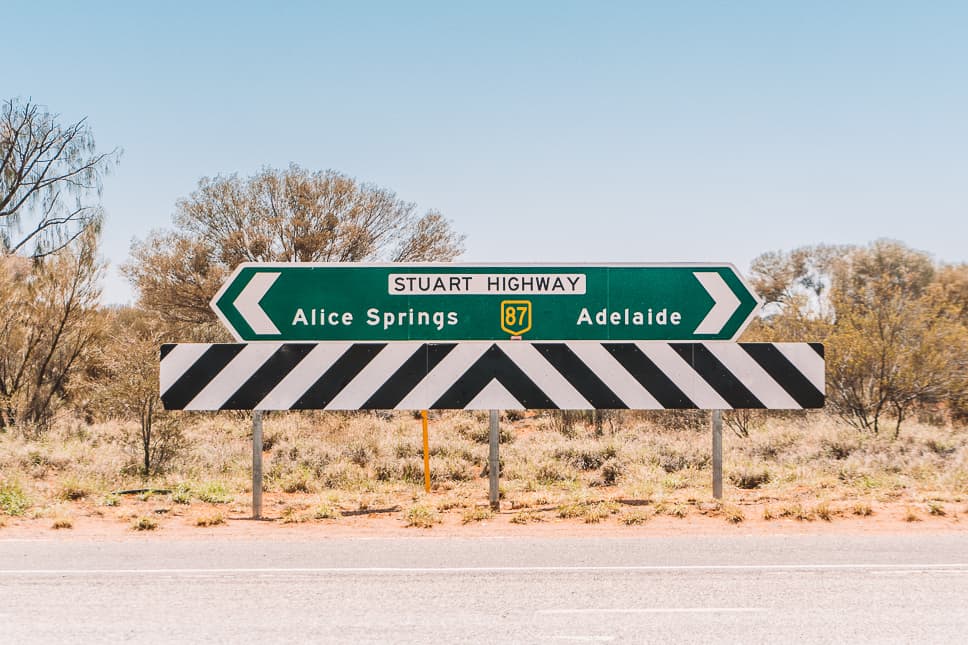
Cadney
The only thing here is the Cadney Homestead, a lovely roadhouse providing you with everything you could hope for. They have delicious burgers in their restaurant and bar (also take-away), a small shop, BBQ areas and offer different kinds of accommodation with a swimming pool. You can choose one of the motel rooms, budget cabins or stay at the caravan park and campground. There’s even an airstrip here, for the flying doctors when they have an emergency nearby.
Cadney is also the gateway to the Painted Desert. This magnificent landscape lies 90 km east of Cadney but is only reachable by 4WD.
Marla
The Marla Roadhouse is bigger than the other ones you’ll have seen. There’s quite a large supermarket, again more expensive than what you’re used to but they have a lot. After fueling up, you can eat something at the restaurant which offers nice food or have a drink at the bar. If you want to stay overnight, you can choose between modern motel rooms, cabins or camping at the caravan park. They also have a swimming pool, BBQ area and laundry options.
Marla itself is actually a small town which has a depot for mechanical repairs. This town is also where you can enter the start or endpoint of the Oodnadatta Track.
Kulgera
On the way to Kulgera, you’ll pass the Dingo Fence and the sign that marks the border between the Northern Territory and South Australia. It makes up for a fun picture. But when you’re coming from up North, entering South Australia, it’s prohibited to cross the border with any fresh fruits or vegetables. Make sure to eat your apples and bananas before you cross this point.
The Kulgera Roadhouse is another Hotel/Motel/Caravan Park/Campground/Pub all in one. They call themselves ‘The first and last hotel in the Northern Territory’. And of course, you can find fuel here.
Whoever is looking for some real adventure, can take the dirt roads up to Uluru or Alice Springs that leave closeby Kulgera. You’ll need a 4WD and some outback driving experience for these tracks.
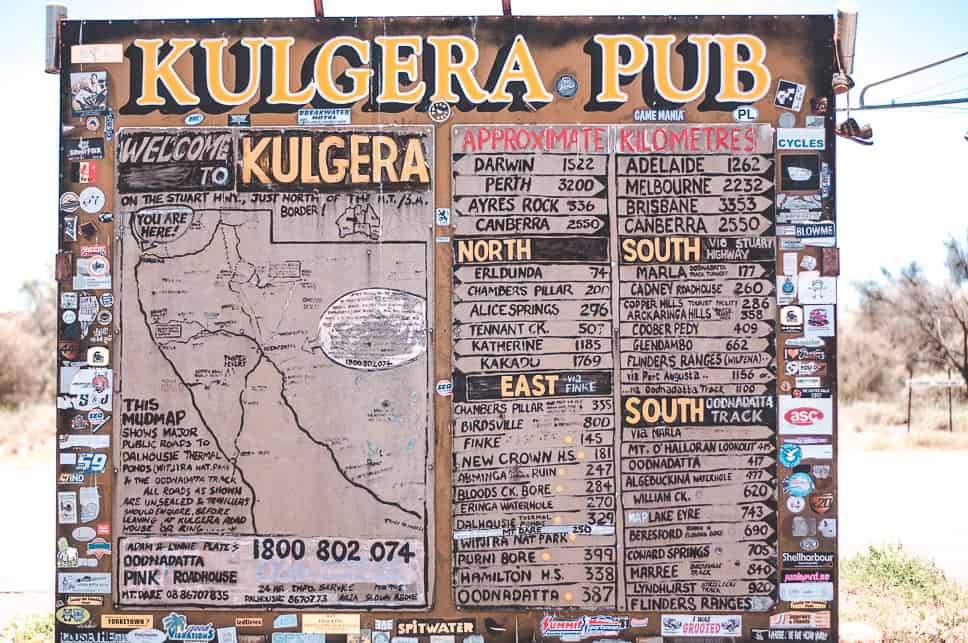
Erldunda
Erldunda marks the start of the Lasseter Highway, which will lead you to the Uluru – Kata Tjuta National Park (or Ayers Rock), another 250 km drive.
If you want to visit Kings Canyon, you’ll also need to take a turn here and take a right turn on the Lasseter Highway. This canyon is part of the Watarrka National Park and definitely worth a visit. Do the 6 km rim walk during sunset or sunrise and stay at the Kings Canyon Resort or a nearby campground.
The Erldunda Desert Oaks Resort offers all the amenities you could hope for. First of all, there is cellphone reception again and fuel, of course. They have a cafeteria with homemade bakery, comfortable rooms, caravan and camping area, restaurant, BBQs and a pool. There even is a playground for the little ones. Our girls loved watching the emus that they keep there.
Don’t forget to check the free campgrounds in the neighbourhood if you’re travelling with a campervan. Or spend the night at Curting Springs along the Lasseter Highway. They have regular rooms or you could camp on their free unpowered sites.
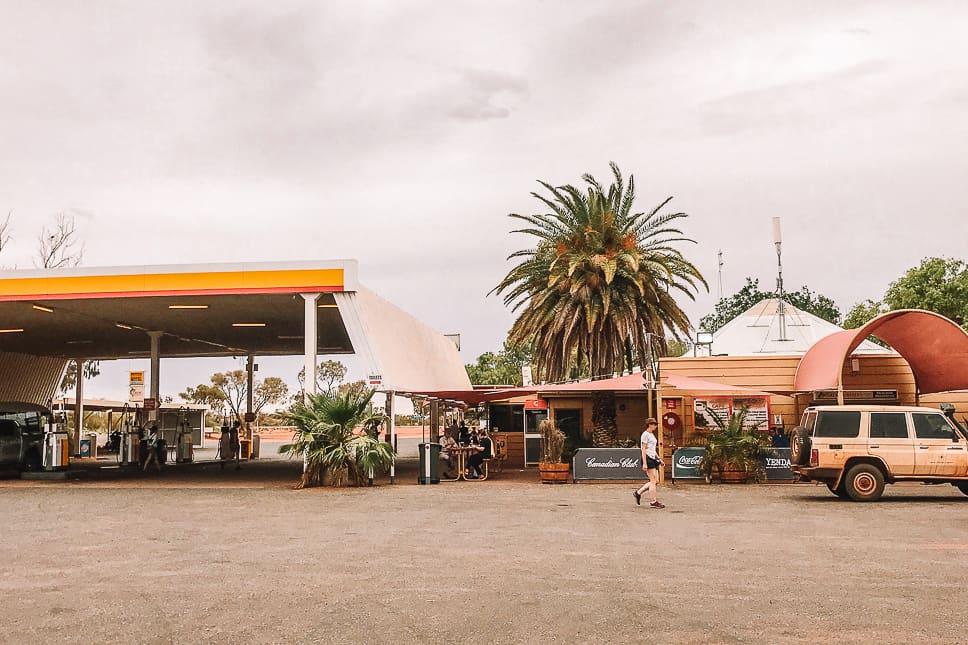
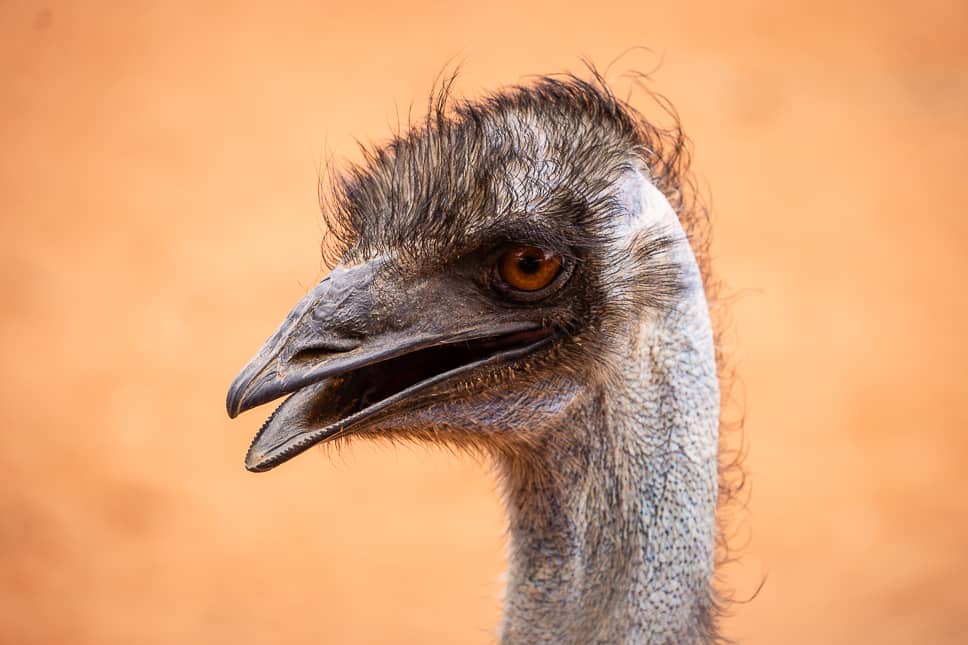
Uluru – Kata Tjuta National Park
Do you really want to drive to the middle of Australia, hundreds of kilometres through the outback and the desert, just to see a red rock in the middle of nowhere? That’s what we heard when we said we wanted to visit Uluru – Kata Tjuta National Park (which are the original names and now more commonly used than Ayers Rock and the Olgas).
Let us tell you, it is definitely worth it! If you haven’t been here, it’s time to plan your trip! It is a magical place with a deep cultural and spiritual history.
From Erldunda, you drive 250 km to Yulara, which is an artificial village and the only place where you can stay if you want to visit the national park for a few days. They have all types of accommodation, shops, tour operators, fun workshops, …
A trip to Uluru can be expensive, that’s why driving and camping up her is definitely your best option. Be aware that fuel, food and everything else is very expensive here.
We stayed for 3 days (which is also how long your tickets are valid for the national park) and can absolutely recommend to the same. There is so much to see and do! I even feel we could have stayed for a few days longer. Enjoy the walks, cultural activities, go to Kata Tjuta, do the base walk with a bicycle, …
Alice Springs
On the way from Erldunda to Alice Springs which is about 200 km, you’ll pass one last roadhouse, Stuart’s Well. Again, they offer all the amenities you need (including mechanical repairs), but be aware it will be much cheaper in Alice Springs. And no phone reception here.
As you approach Alice Springs, the landscape changes from hills to rocky mountains. Alice Springs lies in the MacDonnell Ranges, a magnificent area well worth a visit. There are numerous hikes, trails and drives through the park (some require a 4WD). Take the Larapinta Drive out of Alice Springs.
There are many campgrounds and rooms for every budget in Alice Springs. We camped in Alice Springs for 2 days, resting a bit, enjoying the civilisation before hitting the outback again and visiting some of the highlights.
One of them is definitely Desert Park, which shows the rich history, culture, wildlife and natural habitat of the outback. Your kids will love it. As well as the Kangaroo Sanctuary. Another interesting activity is a tour with the iconic Royal Flying Doctor Service.
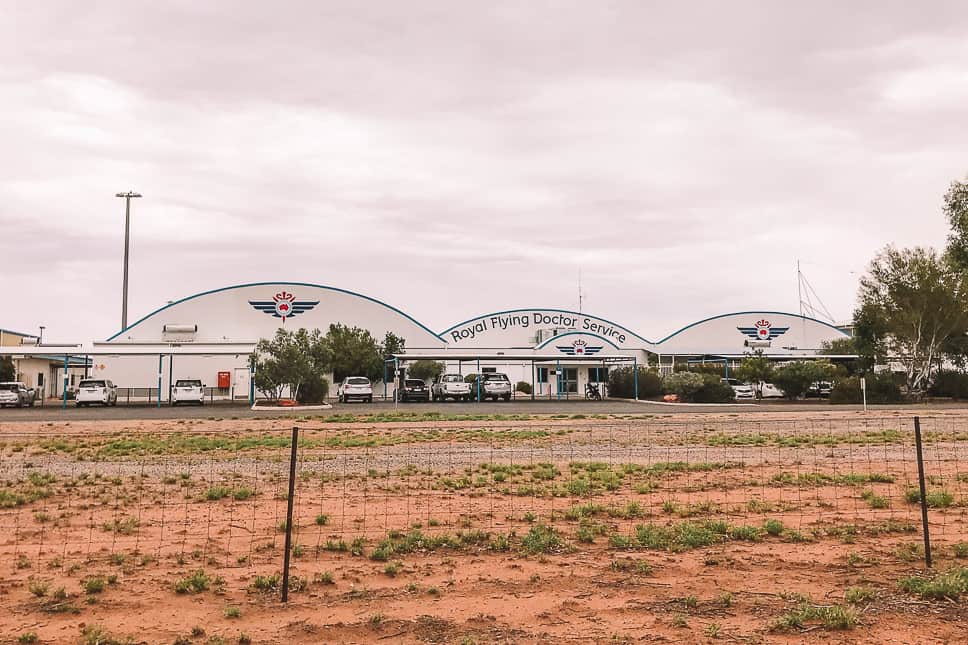
Alice Springs – Tennant Creek
Once you leave Alice Springs, you’re back in the outback, which means no phone coverage (except around the roadhouses) and long drives. The stretch between Alice Springs and Tennant Creek is a bit more than 500 km long, but you’ll pass some nice highlights and roadhouses along the way. We highlight the most special ones.
Barrow Creek
A local we met at a campground told us we absolutely had to stop at Barrow Creek. He said it’s the strangest pub you’ll ever see. It will take you 300 km from Alice Spring, but you pass some rest places and the roadhouse of Ti-Tree.
So we stopped for a short break and it didn’t disappoint! We went in for a drink and didn’t know where to look first. The local habit is you leave something behind, so we put a business card on the wall. But we could have gone much wilder! There are flags, banknotes, drawings and some even leave a bra.
The rooms are filled with the strangest artefacts such as snakes in jars, old historical objects, … You won’t be bored here. Try the roadkill burger, have a chat with the bartender and enjoy your time with the locals here.
Stop for the pub, but you might want to ignore the hotel and campground. We have read mixed reviews. Fuel is very expensive here, but then again you’re in the middle of nowhere.
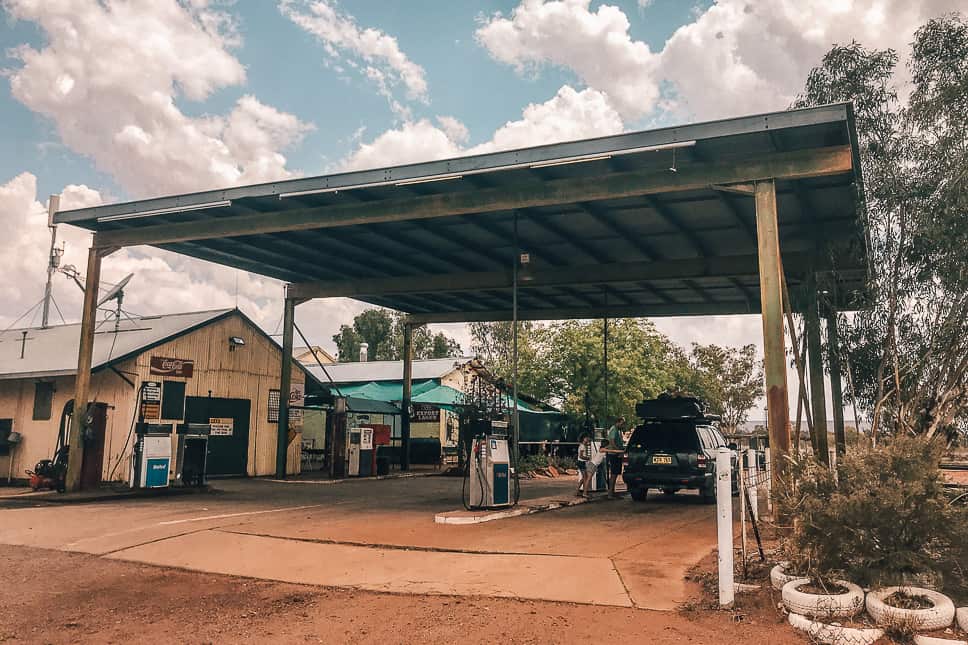
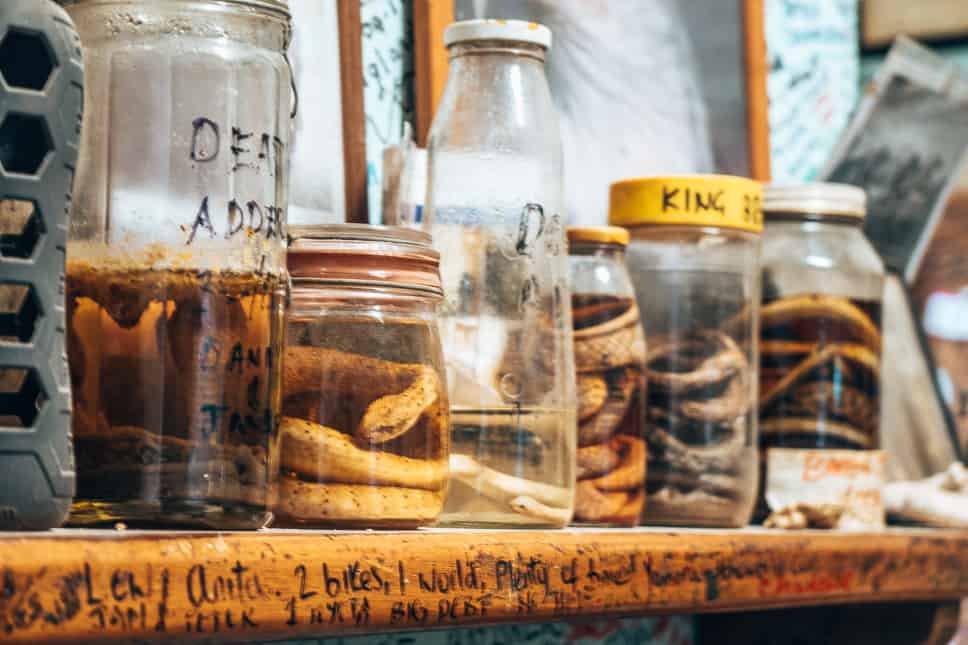
Wycliffe Well
It’s only a short 70 km from Barrow Creek to the Wycliffe Well Roadhouse, but this kinda strange place is worth another stop. You can stay here overnight or eat something, but that’s not the reason this roadhouse is so well-known. This is Australia’s UFO spot.
Walk around, there are tons to see. Take some pictures, buy some bizarre souvenirs and read the information about UFOs, aliens and space.
Fuel is a bit cheaper here, so you might as well fuel up. Don’t get comfortable, however, it’s just a short ride to the next highlight, the Devils Marbles.
Devils Marbles
These big red boulders, scattered around, balancing on each other are truly worth the visit. As if the devil himself was playing with marbles. This area, known originally as Karlu Karlu, is a very spiritual and cultural site, now owned again by the Indigenous people. It’s located about a 100 kilometres from Tennant Creek.
There is a possibility to camp nearby, very basic but beautiful surroundings. Although it can get crowded during the winter months (July and August). The nearest roadhouse is Wauchope which might be a better option or any of the free campsites.
We loved our visit. The kids ran around between the rocks, astonished by their strange shapes and positions. It can be very hot here and you may need a fly head net. But take your time to explore the area. You’ll love it! After our visit, we picnicked at the shaded area where they also have BBQs. If you have a 4WD, there are a few stunning tracks nearby!
Tennant Creek
This little town is about 95 km from the Devils Marbles and the perfect stop if you want to stock up on food, drinks or other supplies and get some reasonably priced fuel. Prices are more reasonable here and there’s a bigger choice.
We didn’t stay in Tennant Creek, but the town has a large indigenous population. Therefore it’s a great place to learn more about their culture. Check for art galleries and the museum. Tennant Creek is also known as Australia’s last gold rush town. You can visit the very interesting Battery Hill mining centre.
Tennant Creek – Katherine
It takes a long 675 km on the Stuart Highway from Tennant Creek to Katherine. But there are some lovely spots to stop along the way. This stretch takes you to the tropical top end, which you will definitely notice by the vegetation.
Phone reception is hard again, which actually means there isn’t any except around the roadhouses and when you reach Katherine.
Banka Banka Station
Another local gave us the tip to stay here for the night. This old cattle station is in the middle of nowhere, but we loved it. This campground is very cheap but has everything you need such as a camp kitchen and facilities. There even are a few cabins you can rent.
You’ll feel the outback here. Kangaroos hop happily around the property once the sun is setting, it’s very quiet (except for the occasional road train passing by), totally desolated but magical. We watched the stars and listened to the sounds of the outback. If we would have had more time, we’d stayed for another night.
Take your time to discover the ‘outback’ artefacts around the property and walk up the hill to enjoy the sunset and the ‘famous’ signing pole. There’s also a scenic walk that will take you to a bush water hole.
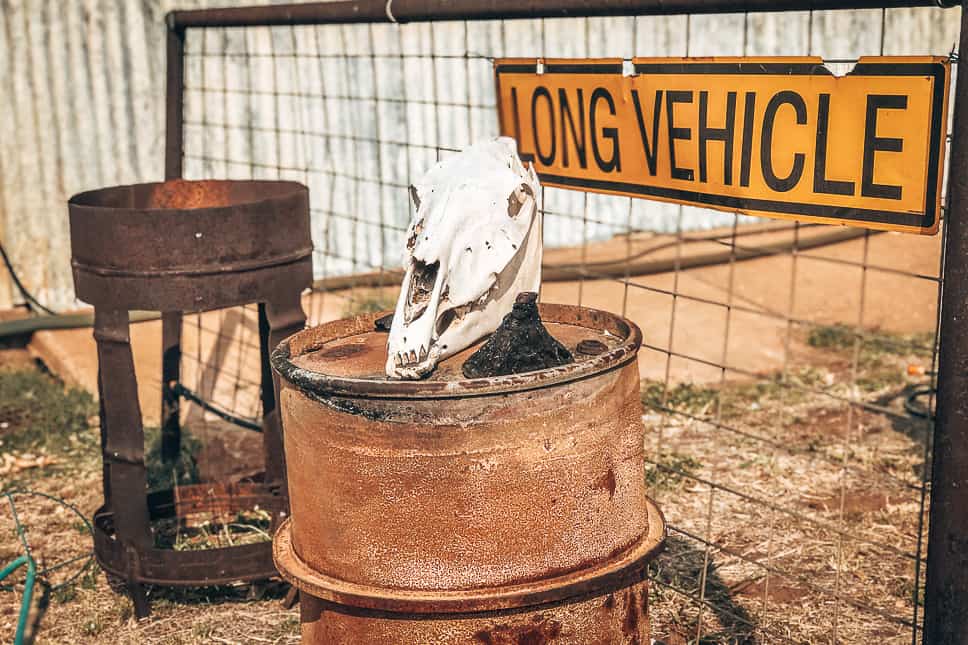
Renner Springs
While they were building the overland telegraph line, Doctor Renner discovered these springs. A rare treasure out here in the outback. These days, the Renner Springs Desert Inn is a lovely place to stay over for the night. They have motel rooms, a caravan park and pool. Try the corn beef sandwich (made with their freshly baked bread).
Locals told us, if you stop here, you should fill your water bottles with the water from the springs. It’s supposed to be the best water you can find on the Stuart Highway. Look out for birds, they love these springs as well.
Elliott – Dunmarra
These two roadhouses on the Stuart Highway offer another break on the long trip. They have everything from fuel and food to accommodation and a shop.
Elliott is 140 km north of Renner Springs, Dunmarra another 100 km north of Elliott.
Mataranka
John Stuart called this place ‘simply magnificent’ and we can totally relate to this! After driving on the dry and dusty roads of the Stuart Highway, the clear blue hot springs of Mataranka are a welcome change.
This place is known for its appearance in the novel We of the Never Never, written by Jeanie Gunn about her adventures and isolation here in the Elsey Stations as early settlers.
There are a few highlights to visit in Mataranka. First of all, there is the Mataranka Homestead. A very enjoyable place to stay for the night or to relax in the crystal clear waters of the Mataranka thermal pool which has a continuous 34 degrees Celcius. You can eat something here before heading out on one of the scenic bush trails. When we were here, the palm trees were visited by thousands of flying foxes, huge bats. They aren’t here all the time, however. You can visit a replica Elsey Homestead where Jeanie Gunn used to live.
Mataranka lies in the Elsey National Park, which offers a lot of activities such as bushwalking, swimming, canoeing, camping, fishing and bird watching. Don’t forget to check some of the historical sites.
At the northern end of the Elsey National Park, is Bitter Springs Thermal Pool. Located only 2 km from Mataranka, the walk up to this pool takes you through the tropical vegetation. This area is a nice place for a swim, picnic or barbecue.
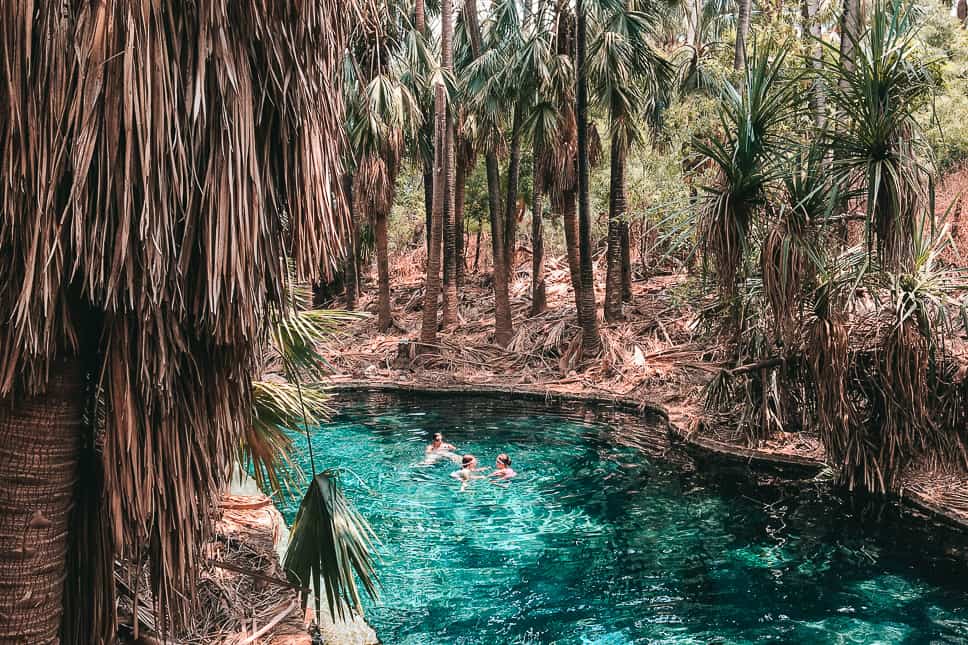
Katherine
It takes another 100 km to bring you from Mataranka to Katherine or around 300 km if you’re coming from Darwin. Katherine is still an outback town but offers all the facilities you need. If you’re driving from Adelaide or Alice Springs to Darwin, it will be the first small city again you come across. If you’re driving from Darwin down to Port Augusta or Adelaide, this frontier town will be the last civilisation before you hit the outback.
We stayed here for 3 weeks because our car broke down. Not our finest moment but we got to meet the most amazing people and discover the area. Katherine will always hold a special place in our hearts. In our travel diary, you can read more about our story. Here, we’ll talk about the places you have to visit when you’re road-tripping on the Stuart Highway.
Read more: Darwin, Katherine and car trouble
Nitmiluk National Park
The Nitmiluk National Park is famous for its breathtaking sandstone landscapes with gorges formed by the Nitmiluk river, waterfalls, natural pools and trails. You can camp in the Park. Start your visit at the visitor centre. It can get very hot here, always let the park officials know if you head out and come back from a long trail.
Learn more about the original owners of these lands, the Jawoyn and Dagomen people. Their spiritual stories of how this majestic landscape was formed, interesting habits and deep believe will give a whole other dimension to your visit.
Katherine Gorge
The spectacular Katherine Gorge will blow you away with its majestic cliffs and changing colours during sunrise and sunset. There is a walk that starts from the Nitmiluk visitor centre that takes you to a viewpoint, overlooking the Katherine Gorge. Take enough water with you for these walks.
Take a boat cruise or canoe to explore the gorges and appreciate its sheer size and cultural importance for the indigenous people. If you really want to go wild, you can even take a helicopter flight over the gorge.
Edith Falls
60 km north of Katherine, on the Stuart Highway, you can find Edith Falls. Another great area to camp and explore the western side of Nitmiluk National Park.
Take a swim in the lower pool, which is open year-round, although might be closed during the rainy season when crocodiles are spotted. No worries, however, the park rangers monitor the area closely.
There is a 2,5 km walk taking you to the upper pool and a 9 km walk (return) to Sweetwater Pool.
Katherine Hot Springs
When our car broke down, we were staying at the Riverview Tourist Village and we were lucky. This campground is located right next to the Katherine Hot Springs.
These natural thermal springs offer a great swim in one of the pools, all connected to each other. It’s a great spot to relax, swim, picnic or go for a walk through the tropical vegetation.
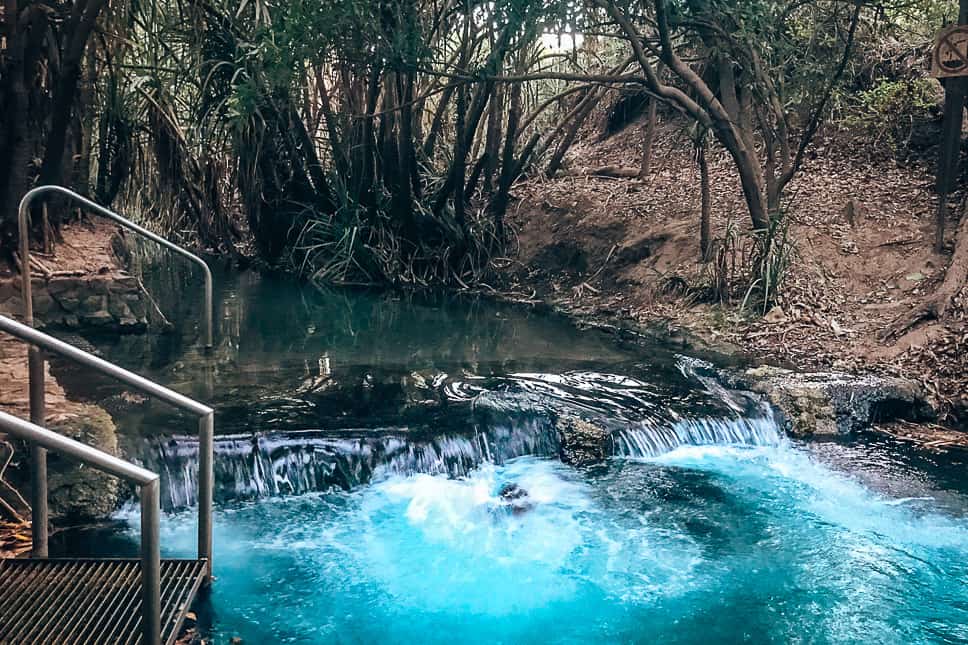
Katherine – Darwin
This stretch of the Stuart Highway is about 300 km and takes you through a fascinating landscape. A mix of the outback scenery and tropical vegetation of the top end.
This region has some amazing national parks to visit such as Nitmiluk National Park (which we described in the Katherine section), Litchfield National Park and Kakadu National Park. If you want to visit them all, you’ll need about a week. There is no cell phone reception on this stretch until you come near either Katherine or Darwin.
Litchfield National Park
We stayed here for only one night but would love to come back. What an amazing area! The real bush experience. Litchfield National Park has a lot of vegetation, which means lots of shade to escape the summer heat.
This park offers a lot of waterfalls, natural swimming holes, spectacular termite mounds and beautiful walking trails. There are a few campgrounds in the park, all very basic but they offer real bush camping in a stunning environment.
We stayed at the Florence Falls Campground which we can really recommend! It has no power or water, but you can use showers and toilets. The best part is its location! A short walk takes you to Florence Falls, great for a swim and to enjoy the views! Another great spot nearby is Buley Rockhole. These cascading pools are the best playground for kids and a great spot to refresh.
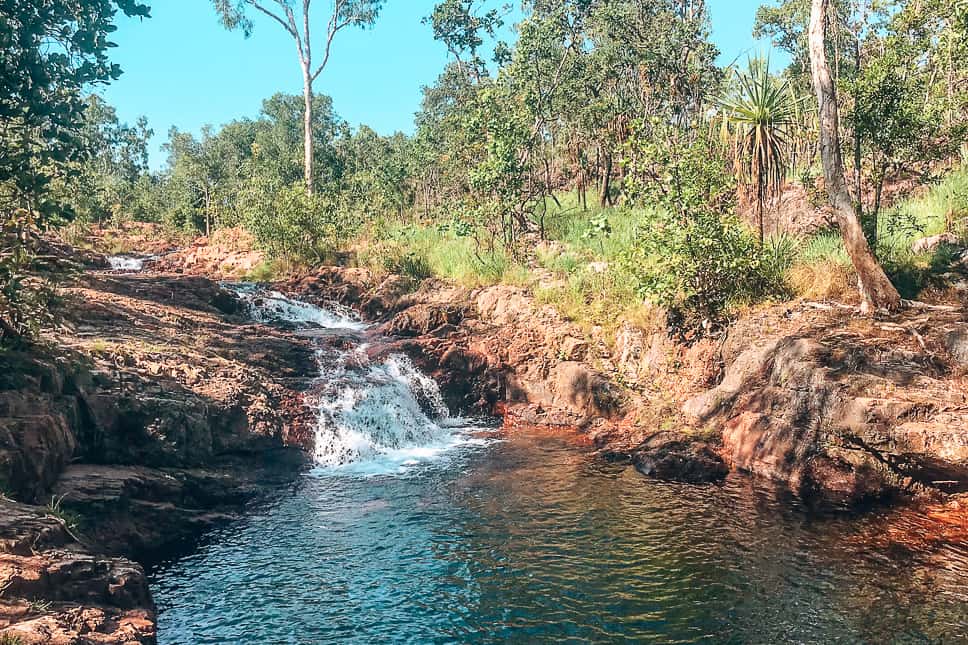
Wangi Falls is the most known and popular attraction of Litchfield National Park. From the viewpoint, a short walk from the car park, you can admire these two falls cascading into the large pool. If you walk down and the sign says it’s safe, you can take a refreshing swim in the pool.
One of the highlights for us were the termite mounds. We had never seen such big ones before. They are something special. It’s amazing how these animals can create something so grant. Our kids called them the apartment buildings, part of the city these little termites built for themselves.
Kakadu National Park
Unfortunately, we didn’t have time to explore Kakadu National Park. We were here during the heat of the buildup to the rainy season. As Kakadu has less vegetation and shade, we decided to take the kids to Litchfield National Park. We will come back for it but think this park already deserves to be mentioned in our guide of the Stuart Highway.
If you are coming from Katherine, take the Kakadu Highway (State Route 21). Heading down from Darwin, take the Arnhem Highway (State Route 36).
Adventure awaits you in Kakadu, the biggest national park of Australia. Take your time to explore what the park has to offer. The way you get to experience the park will differ greatly depending on the time of your visit. During and by the end of the wet season, falls and creeks will be filled with water. By the end of the dry season, you’ll get to see a whole other Kakadu.
Go spot the wildlife such as numerous crocodiles and birds, hike one of the many trails or take a boat onto the Yellow Water Billabong. Discover the rich and spiritual culture of the indigenous people who have been living here for thousands of years. This park has some of the oldest indigenous rock art.
Darwin
Whether you start your road trip on the Stuart Highway here, as we did or arrive in Darwin after an epic trip through the outback and across the nation leaving from Adelaide or Port Augusta, Darwin will be a special place for you.
The capital of the Northern Territory has a different vibe than the more famous places such as Sydney, Melbourne or Brisbane. Up here, you’re in the Top End, the tropical north. Darwin has a bit of the feeling of a frontier town. It offers all the facilities you can think of and is a great place to stay for a couple of days, soaking up the atmosphere.
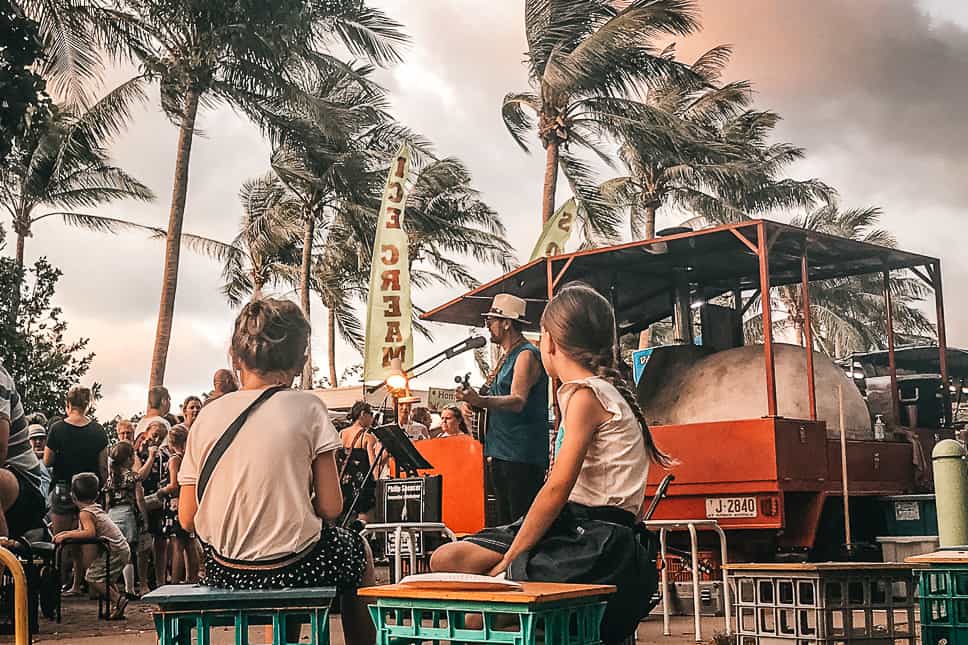
One of the highlights is Mindil Beach and its Sunset market, every Thursday from April to October during the dry season. We visited the market a couple of times and loved the vibe. Enjoy your dinner at one of the delicious food stalls while listening to live music. Buy some souvenirs and admire how the indigenous people make their art. And don’t forget to enjoy the sunset on Mindil Beach!
But Darwin has much more to offer. It’s a place where you can find delicious restaurants, a swimming area at the waterfront, hip bars and a lot of shops. Learn more about its rich history, from the early pioneers to WWII or cyclone Tracy passing by. Darwin is also the place to plan (multiple) day trips to explore the nature and wildlife of the Top End.
No time to read the entire article now? Or do you want to use it while being on the road (often without phone reception)?
Download our FREE STUART HIGHWAY GUIDE now!
Share on Pinterest
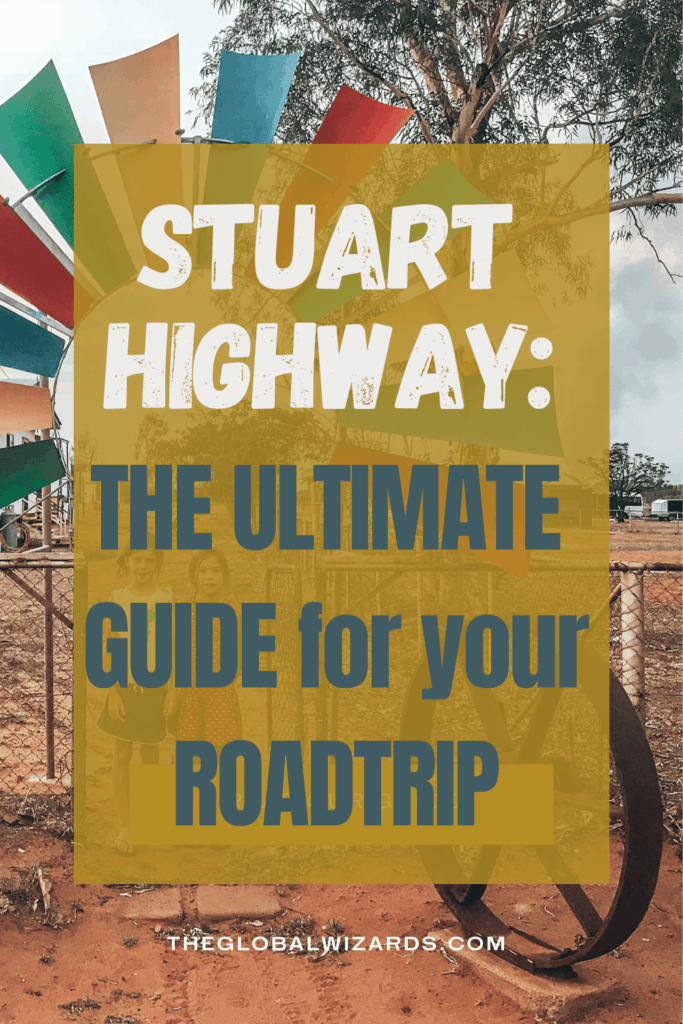

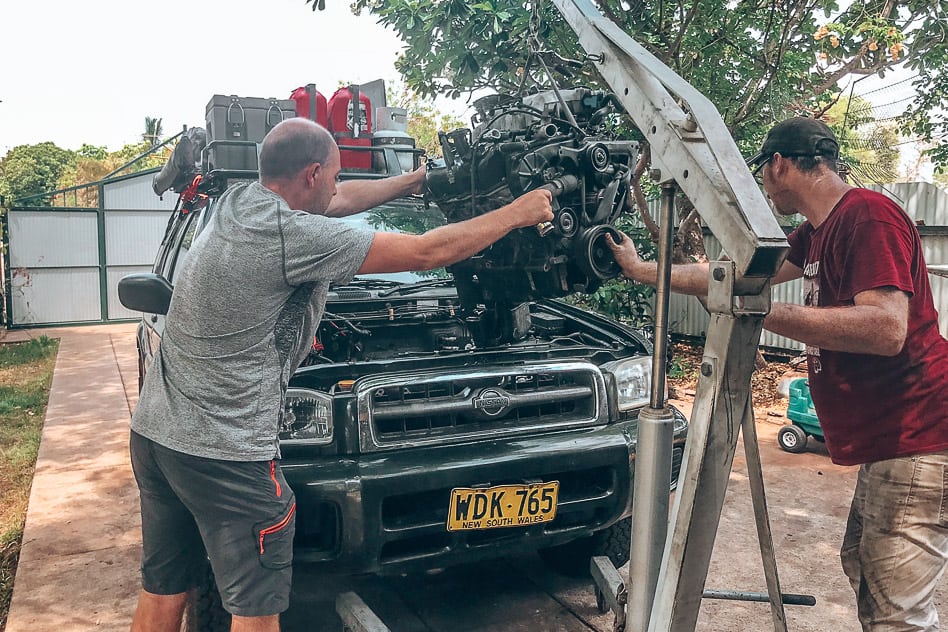
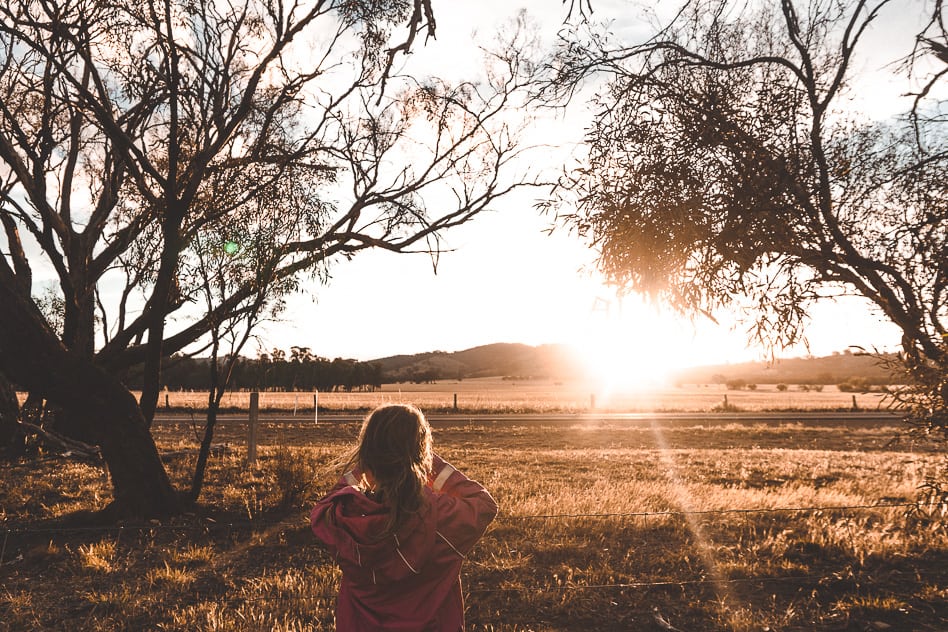
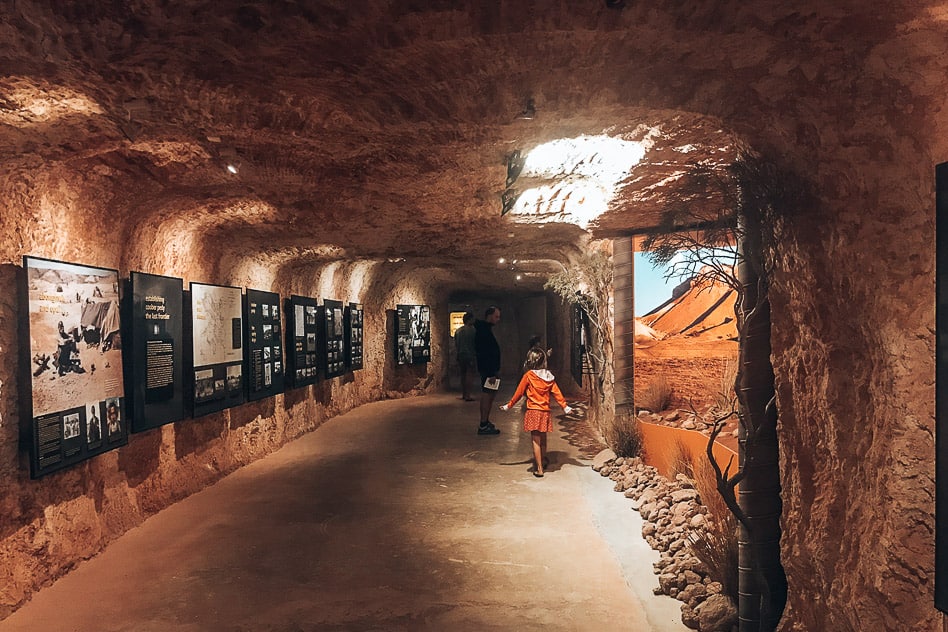

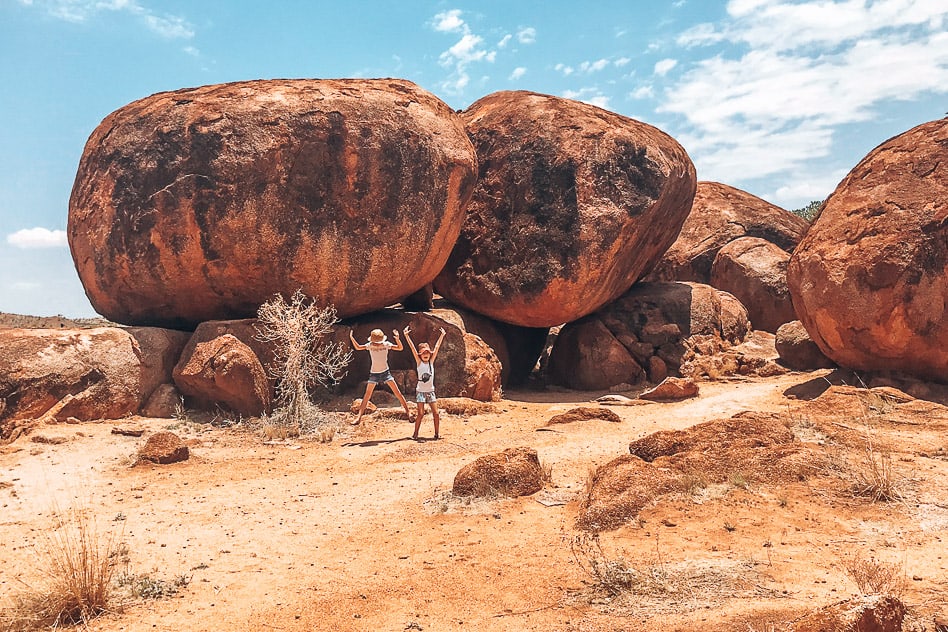
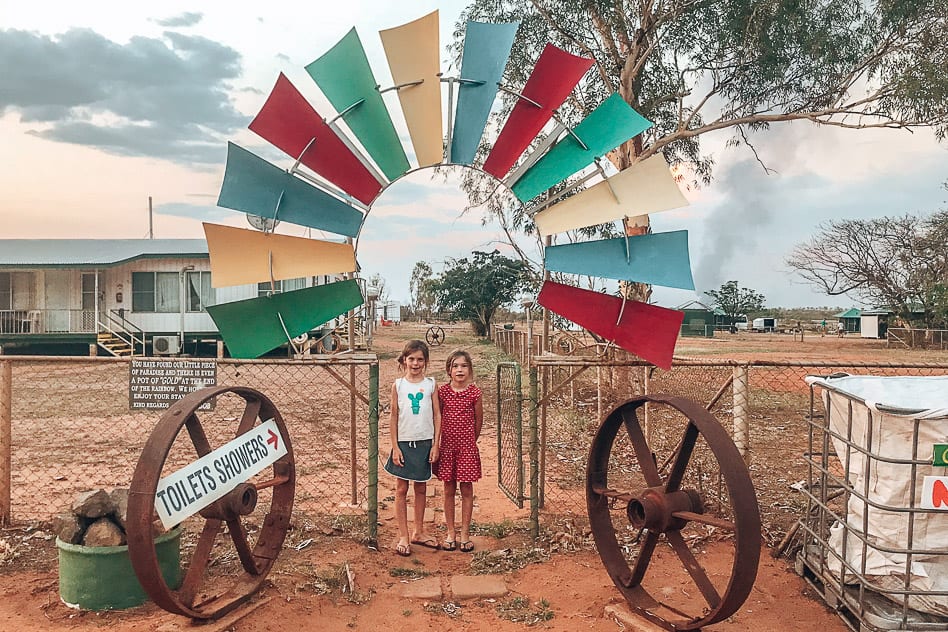
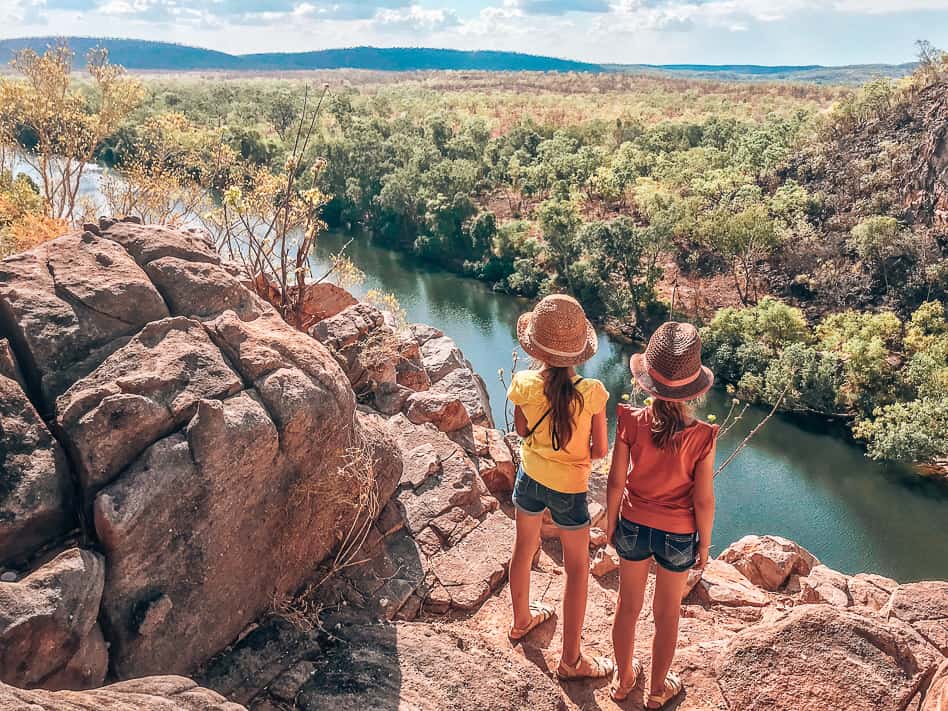

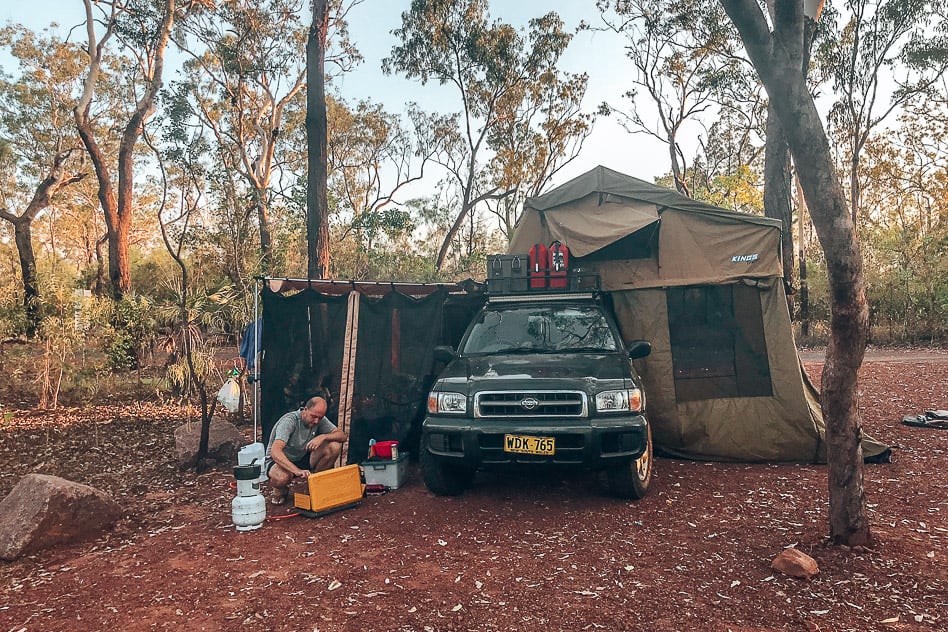
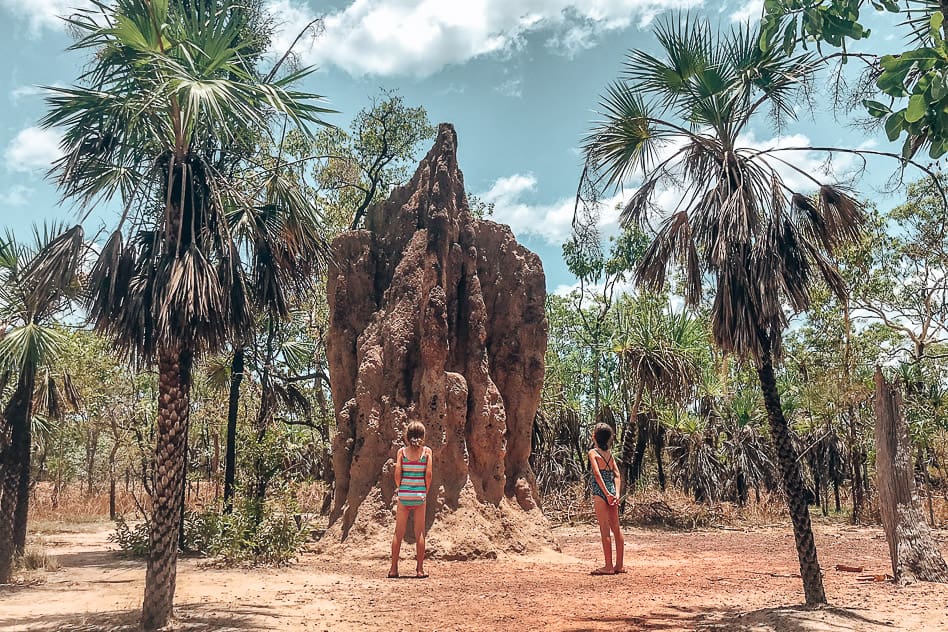
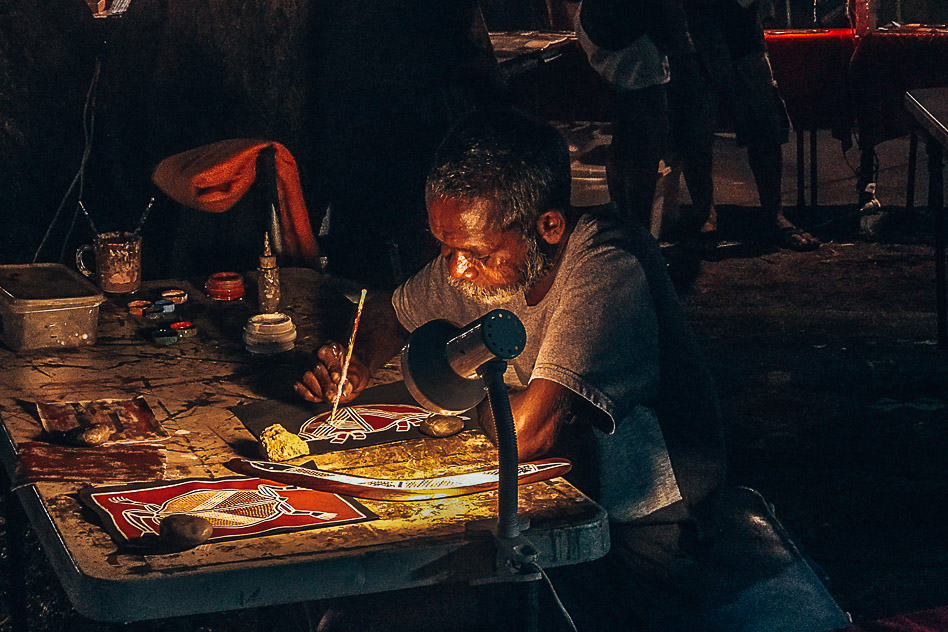
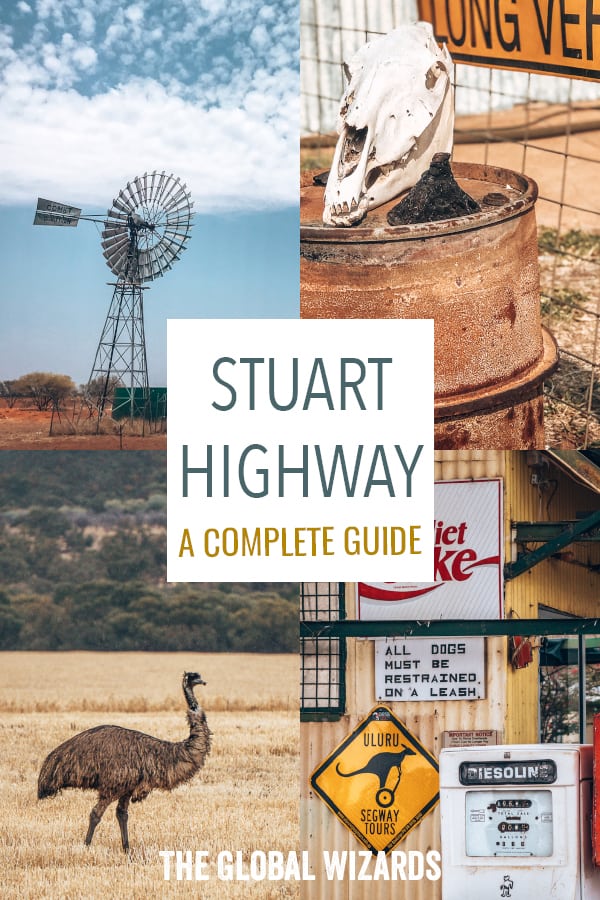
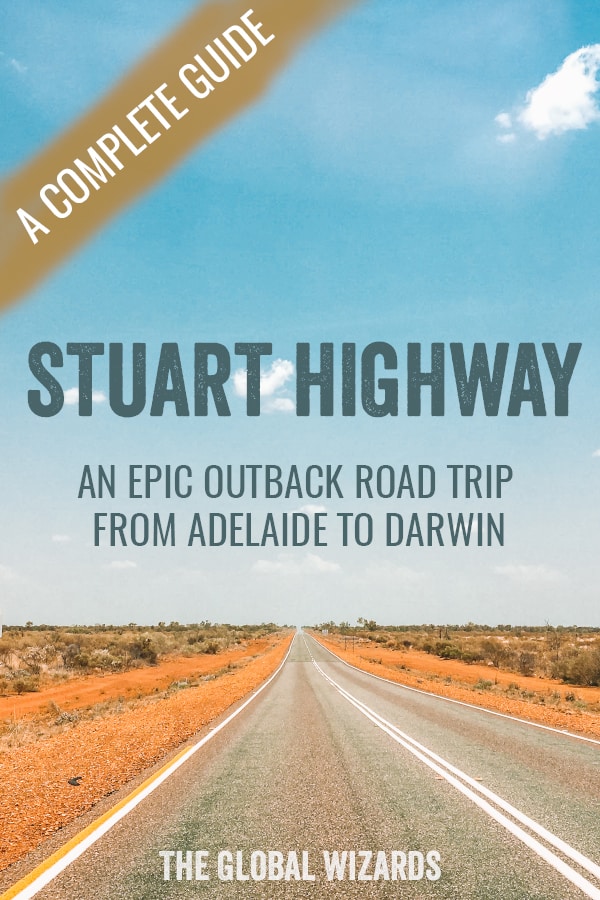
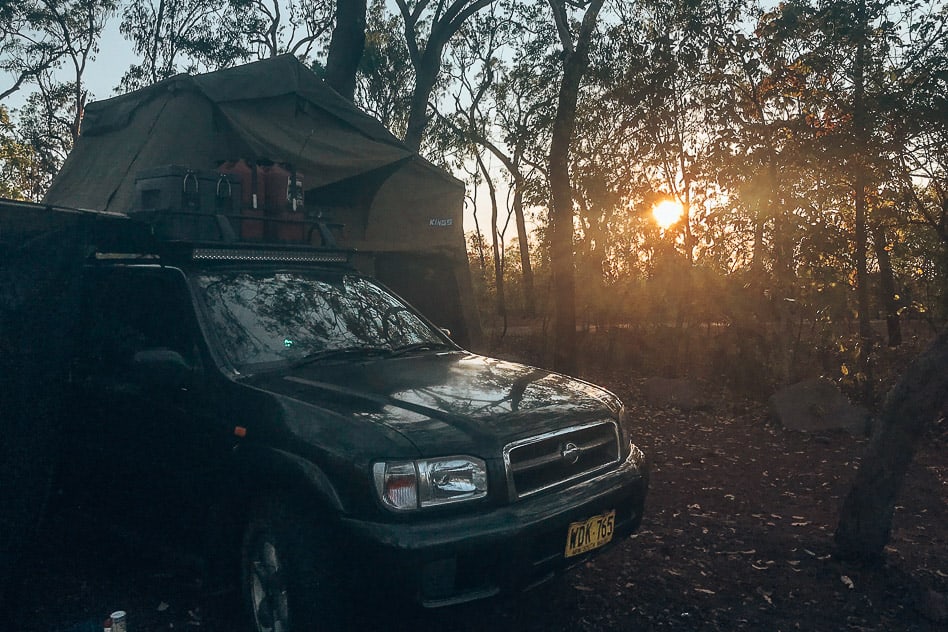
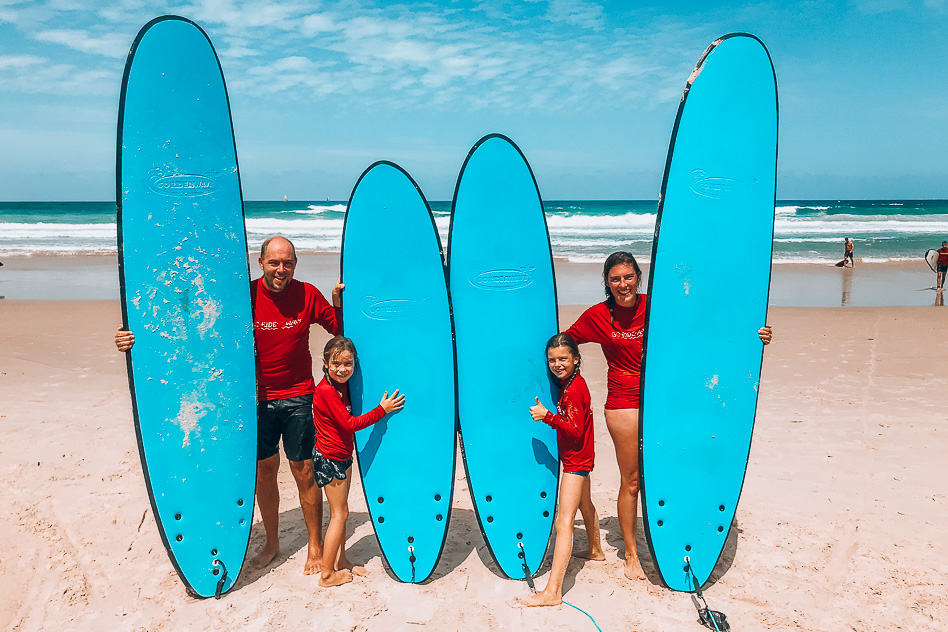
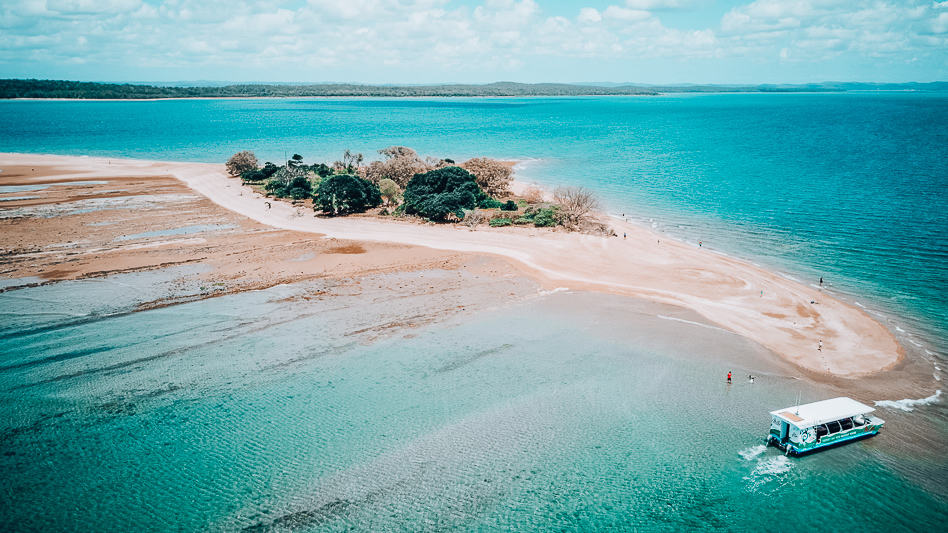
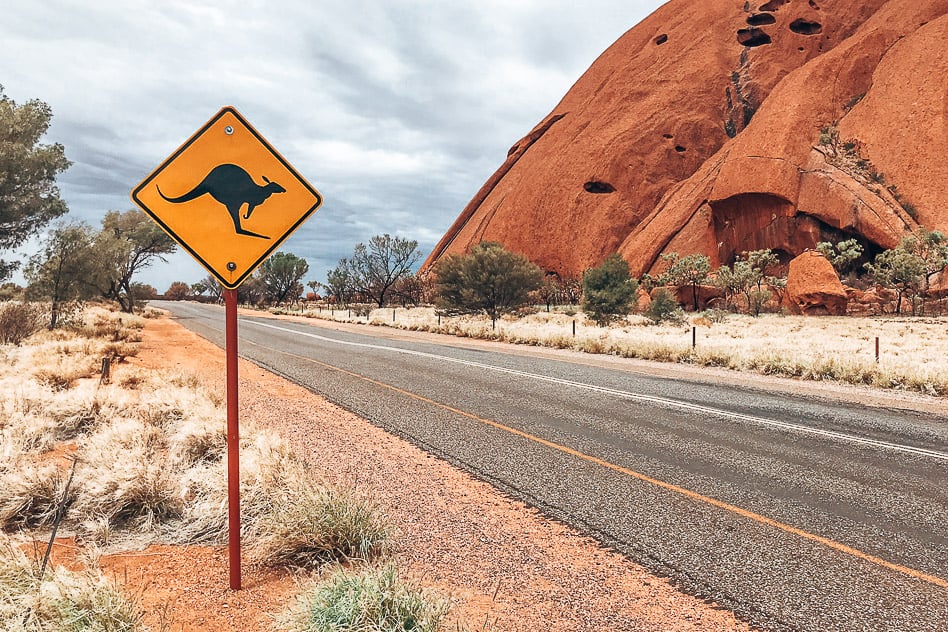
There will never be a dull moment road tripping with the kids that for sure! And adding this awesome Adelaide to Darwin itinerary? Super fun!
Glad you liked our article!
Bondi beach and Sydney harbor bridge are the most beautiful thing to visit also the opera house. Thanks for the wonderful information, i wish to visit this year…
You’ll love it there!
Awesome article 🙂 Keep posting the same.!!!
Thanks so much!